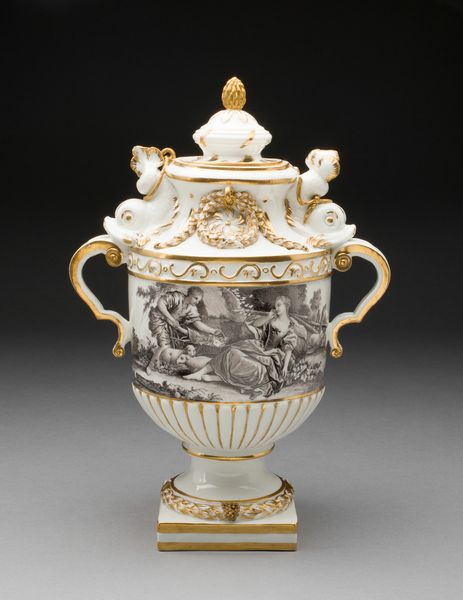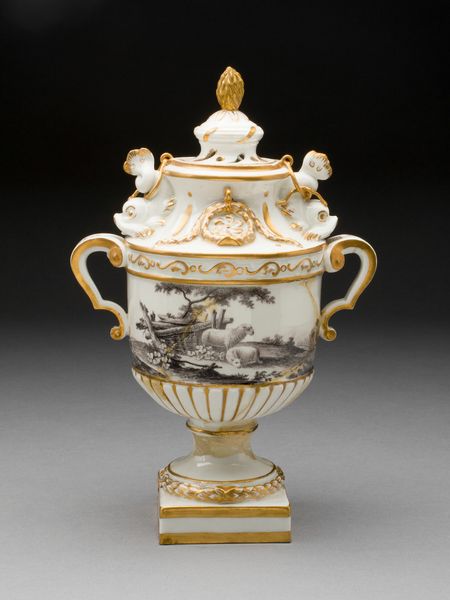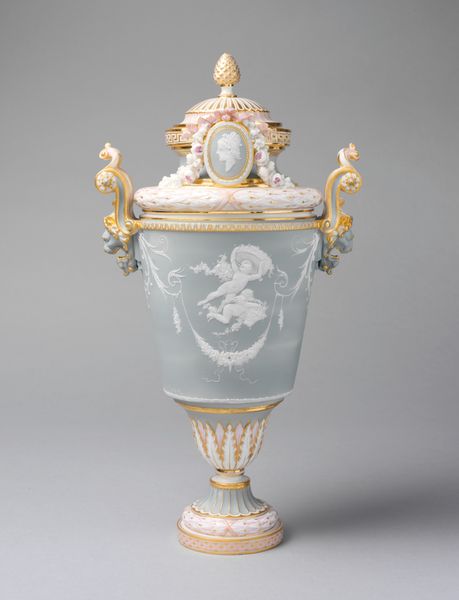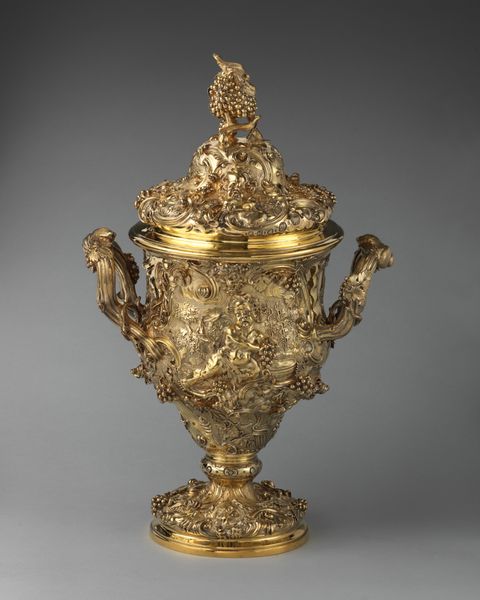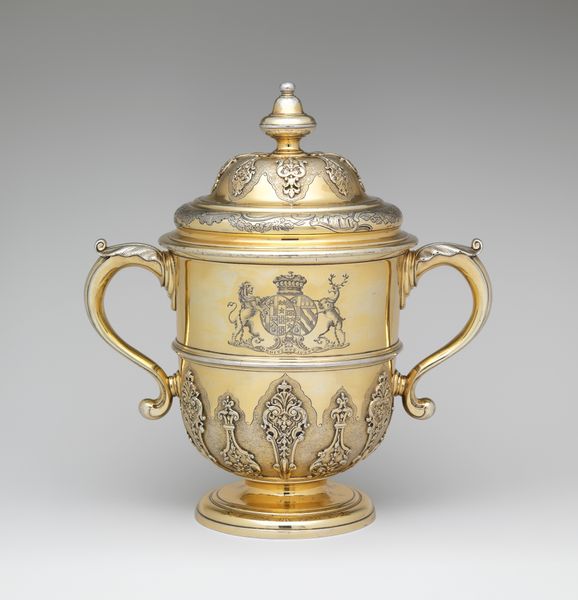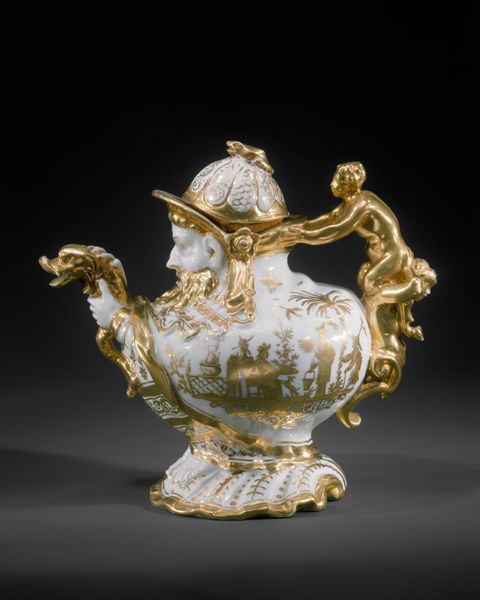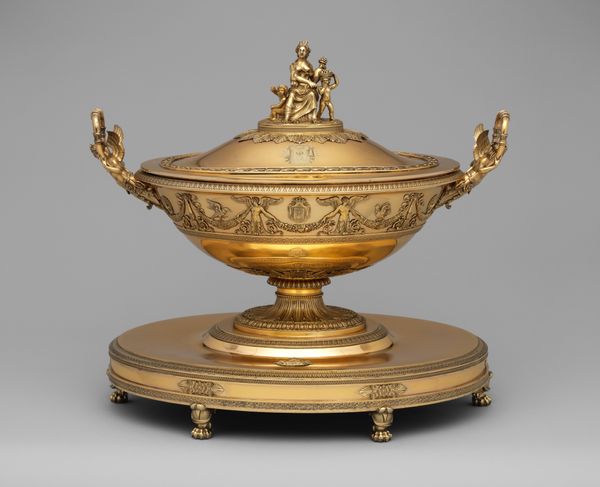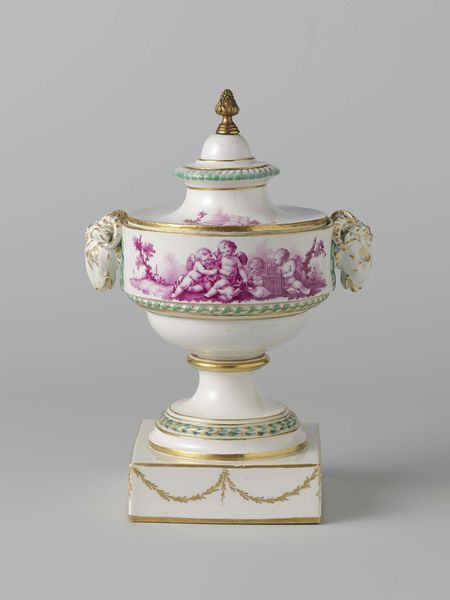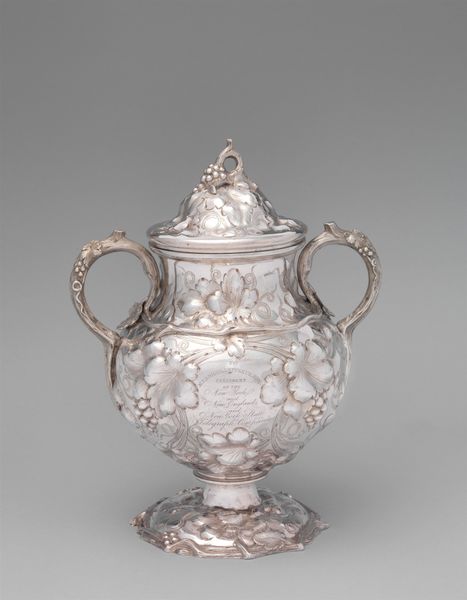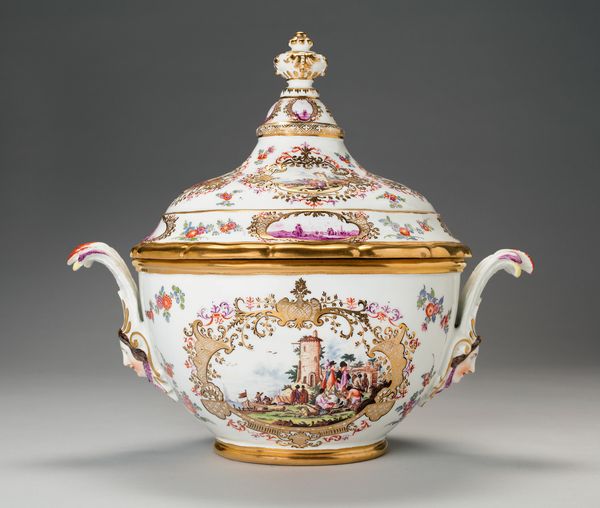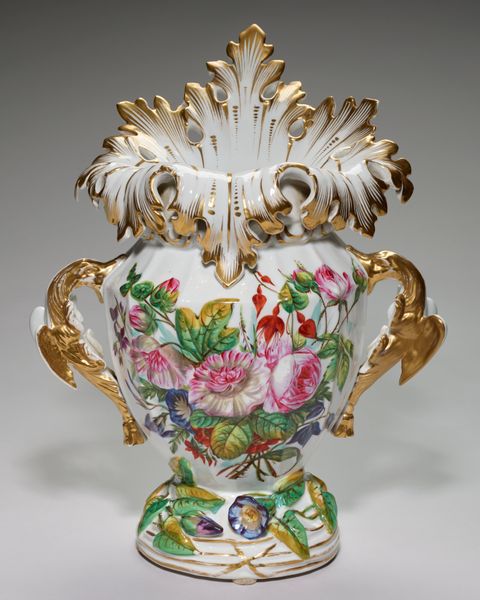
Dimensions: 23.2 × 15.2 × 10.2 cm (9 1/8 × 6 × 4 in.)
Copyright: Public Domain
Curator: Standing before us is an "Urn," crafted between 1776 and 1777 by the Porzellanmanufaktur Frankenthal. What immediately strikes you about this piece? Editor: Its pastoral tranquility! The monochromatic scenes contrasted against the bright white porcelain evokes a sense of quiet contemplation, though the gold embellishments add a touch of aristocratic opulence. Curator: The materiality is fascinating, isn’t it? This porcelain, a coveted material at the time, speaks volumes about access and status. The precise molding, the application of delicate imagery – it all points to specialized labor. It is far removed from folk art; this piece exemplifies industrial control and division of labor. Editor: Indeed. Looking closer at these genre paintings, one wonders about the power dynamics at play. Who is granted leisure, who toils? The contrast highlights the societal strata of the time. It hints at romantic ideals imposed over the lived realities for the working classes of late 18th-century Europe. Curator: Exactly. The Rococo style, with its fondness for ornamentation and idealized nature, masks the underlying tensions within the social order. The decoration becomes a form of control. The urn's functionality is almost secondary to its symbolic value. Editor: The urn shape itself carries layers of meaning too – classical allusions and their association with memory and mourning. But rendered in delicate porcelain, its impact feels decidedly different. I'm also noticing how the dolphin figures seem oddly grafted on - are they supposed to be decorative, subversive, or what? Curator: I wonder about that intentional clash of imagery too. They could reference maritime trade networks which brought luxury goods into Europe—another layer to unpack related to labor, global economies, and consumption in the 1700s. Editor: Absolutely. It makes me question whose story gets told and remembered through such a curated object. Who could even afford something like this and how did it impact their day-to-day life and relationships? Curator: Precisely! The Urn invites us to explore connections between material culture, labor processes, and broader historical currents. Editor: It transforms the act of mourning and remembrance into a complex lens through which to view class, production, and societal aspiration. I love that a seemingly simple object opens up such a diverse array of meanings and analyses!
Comments
No comments
Be the first to comment and join the conversation on the ultimate creative platform.
